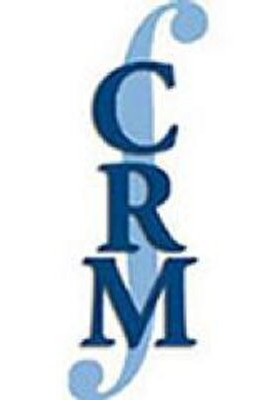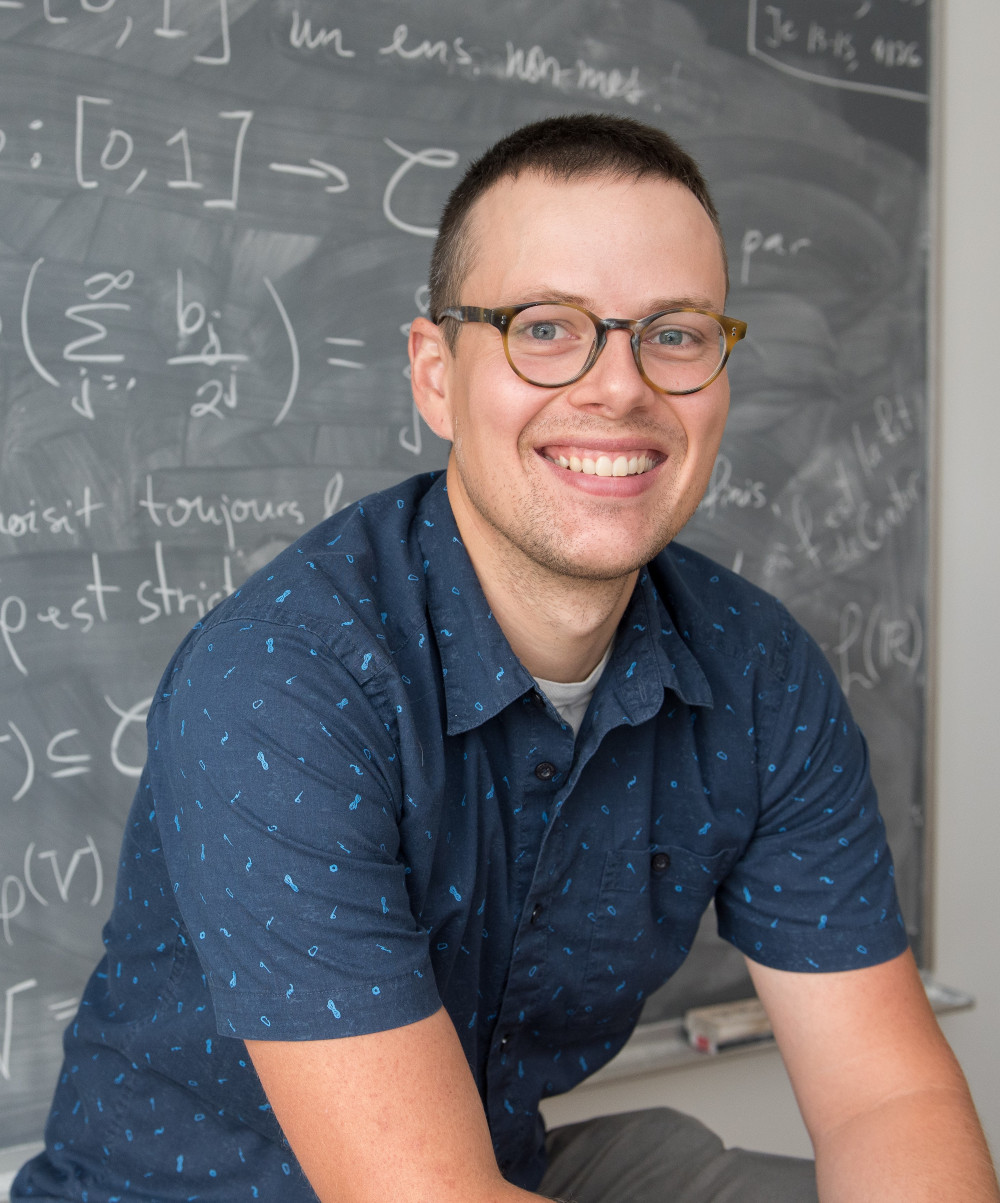

minicourse in geometric spectral theory
Extremal problems on hyperbolic surfaces
Maxime Fortier Bourque Université de Montréal |
Bram Petri Sorbonne Université |
March 25, 27, and 28, 2024
12:00 Québec time
The zoom link will be sent to the Spectral geometry in the clouds mailing list. Please contact Alexandre Girouard if you would like to receive it.
Syllabus
A hyperbolic surface is a connected, oriented, 2-manifold equiped with a complete Riemanninan metric of constant curvature -1. Thanks to the uniformization theorem, there is a unique such metric in every conformal class on a closed surface of genus at least two. Just like on any Riemannian manifold, one can associate various numerical invariants to a hyperbolic surface, such as the diameter, the length of the shortest closed geodesic, or the spectral gap of its Laplacian. A natural problem is to try optimize (minimize or maximize) such invariants over the space of all hyperbolic metrics of a given genus. One reason to hope for such optimization problems to be tractable is that the moduli spaces of hyperbolic metrics are finite-dimensional, and although they are not compact, they have only one end which is easy to understand. Despite all this, in some cases we still know less in the constant curvature setting than in variable curvature. Nevertheless, a lot of progress has been made in recent years on the spectral problems in particular.
In this mini-course, we will focus on the maximization of the size and multiplicity of the first positive entry in the length spectrum (the collection of all lengths of closed geodesics) and in the eigenspectrum of the Laplacian. We will explain how to prove upper bounds on these invariants for all hyperbolic surfaces of a given genus and how to prove lower bounds for specific surfaces with many symmetries. In both cases, the approach is based on the Selberg trace formula, which provides a link between (and therefore imposes restrictions on) these two spectra.
Recordings
The recording for lecture 1 and lecture 2 is here.
Lecture 3 is here.
Lecture 4 is here.
Slides
Lecture 1
Lecture 2
Lecture 3
Lecture 4
There will be four lectures of one hour each, the contents of which will be as follows:
Lecture 1
Monday, March 25
Start: 9h PDT -- 12h EDT -- 16h GMT -- 17h CET
This will be an introductory lecture in which we will discuss the geometry hyperbolic surfaces, list some examples of extremal problems and state the current state of affairs on them. We will also see different methods that have been used to attack these problems.
Lecture 2
Monday, March 25
Start: 10h PDT -- 13h EDT -- 17h GMT -- 18h CET
In this lecture, we will explain the general principle behind trace formula methods, which go back to work of Cohn-Elkies and Gorbachev on the sphere packing problem in Euclidean space. We will then explain two approches to optimize bounds coming from the trace formula: the linear programming approach of Cohn-Elkies for general upper bounds and the quadratic programming approach of Booker-Strombergsson for lower bounds in specific cases.
Lecture 3
Wednesday, March 27
Start: 9h PDT -- 12h EDT -- 16h GMT -- 17h CET
We will explain how symmetries of a surface can be used to obtain finer information on its eigenspectrum and in particular on the multiplicity of its eigenvalues. We will first recall some representation theory of finite groups and then explain how the eigenspectrum of a surface can be decomposed into a finite union of spectra of Laplacians twisted by irreducible representations of the isometry group. These twisted spectra can then be accessed via the twisted Selberg trace formula.
Lecture 4
Thursday, March 28
Start: 9h PDT -- 12h EDT -- 16h GMT -- 17h CET
In the final lecture, we will discuss triangle surfaces, which are generalizations of Platonic solids. A triangle surface admits a tiling by pairs of congruent triangles such that its group of isometries acts transitively on these pairs. Equivalently, it is a strict local maximizer for the size of the automorphism group. We will explain how one can estimate the Laplace spectrum of such surfaces using finite element methods, and then how to prove rigorous eigenvalue and multiplicity bounds using the techniques of lectures 2 and 3. In particular, this yields counterexamples of genus 10 and 17 to an upper bound conjectured by Colin de Verdière on the multiplicity of the first nonzero eigenvalue.
References
- N. Bergeron, The spectrum of hyperbolic surfaces, Translated from the 2011 French original by Brumley, Universitext, Springer, Cham; EDP Sciences, Les Ulis, 2016.
- A. R. Booker and A. Strombergsson, Numerical computations with the trace formula and the Selberg eigenvalue conjecture, J. Reine Angew. Math. 607 (2007), 113–161.
- P. Buser, Geometry and spectra of compact Riemann surfaces, Modern Birkhauser Classics, Birkhauser Boston, Inc., Boston, MA, 2010, Reprint of the 1992 edition.
- H. Cohn and N. Elkies, New upper bounds on sphere packings I, Ann. of Math. (2), 157 (2003), 689–714.
- G. Cornelissen and N. Peyerimhoff, Twisted isospectrality, homological wideness, and isometry — a sample of algebraic methods in isospectrality, SpringerBriefs in Mathematics, Springer, Cham, 2023.
- D. A. Hejhal, The Selberg trace formula for PSL(2,R). Vol. I, Lecture Notes in Mathematics, Vol. 548, Springer-Verlag, Berlin-New York, 1976.